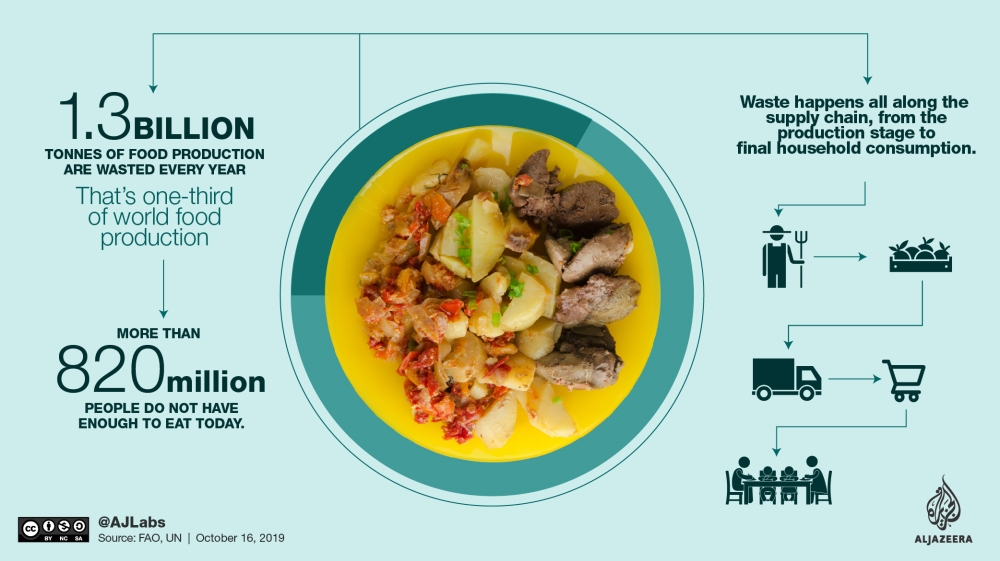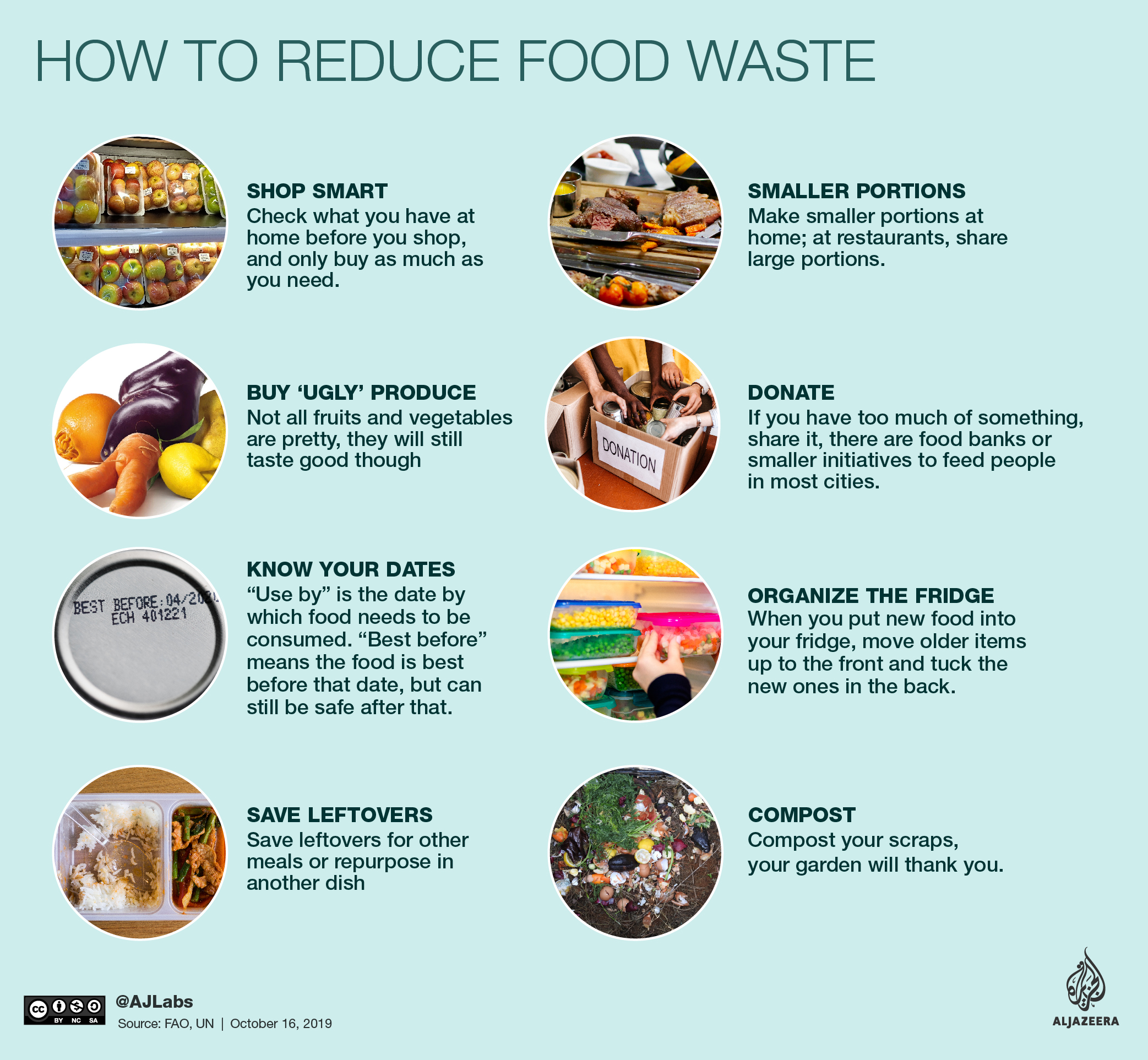Originally published October 16, 2019 by Al Jazeera News. Written by Usaid Siddiqui.
From fairs promoting healthy diets to lectures teaching students how to reduce food waste, a wide range of public events is planned for Wednesday in some 150 countries to raise awareness about tackling world hunger and highlight the challenges facing the global food supply. The initiatives are part of World Food Day, which is marked annually on October 16, the day the Food and Agriculture Organization (FAO), a United Nationsagency, was founded in 1945.
While on a downward trend between 2005 and 2015, world hunger has slowly but steadily increased in recent years. In 2018, approximately 820 million people worldwide were undernourished – up from 785 million people four years ago. At the same time, an estimated 1.3 billion tonnes of food are wasted or lost annually, according to the FAO, which defines food waste as “the discarding or alternative (non-food) use of food that is safe and nutritious for human consumption”.
“We waste about one-third of the food produced for human consumption, at a cost of $990bn per year,” Inger Andersen, executive director of the United Nations Environment Programme, told Al Jazeera. “You would be hard pressed to find such inefficiencies in other industries,” she said.
The threat of food waste
In recent years, there has been a renewed attempt to drastically reduce food waste as part of efforts to eliminate hunger. One of UN’s 17 Sustainable Development Goals (SDGs) set the target of halving food waste by 2030 “at the retail and consumer levels and reduce food losses along the production and supply chains, including post-harvest losses”.
A key area affected by food waste is the climate. According to Andersen, food waste was currently generating eight percent of greenhouse gas emissions and hence food loss and waste was a “critical tool” for nations in the fight against climate change. She also warned about the dangers posed to biodiversity: “Food wastage exacerbates the negative externalities that mono-cropping and agricultural expansion into wild areas create on biodiversity loss.”
“In addition to deforestation to grow foods that will never be consumed, agricultural runoff and fish farming wastes are creating dead zones in aquatic ecosystems, and food waste in landfills (waste disposal sites) is disrupting food webs, as certain predators shift towards a diet of human trash.”
Gulnihal Ozbay, a professor at Delaware State University, told Jazeera that in the United States – one of the biggest producers of food waste in the world – the “majority of material in landfill comes from food waste”. Ozbay said creating landfills means finding more land to clear – “more trees that need to be cut” – an exercise that can severely affect the world’s efforts to tackle climate change.
According to the United States Environmental Protection Agency (EPA), municipal solid waste landfills are the “third-largest source” of human-related methane emissions – a major contributor to global warming. In the US, they were responsible for approximately 14.1 percent of these emissions in 2017, as documented by the EPA.
Changing consumer habits
Andersen said that “making a huge shift in household behaviour” was a major challenge in combatting the efforts to reduce food waste.
Ozbay agreed, saying many people “take our food supply for granted”, especially in places such as the US. “Thinking that there is an endless supply of food, people are unlikely to use it efficiently.”
The FAO says that in middle and higher-income countries, food is wasted at later stages in the supply chain – mainly at the retail level and due to consumer behaviour. The agency estimates that consumers in rich countries waste approximately as much food – 222 million tonnes – as the entire net food production of sub-Saharan Africa – 230 million tonnes.




Health Law & Policy, Commentary
Gearing Up for 2025: Advocates Share Challenges and Opportunities – Health Care in Motion
December 18, 2024